Classé Delta Stereo and Delta Pre
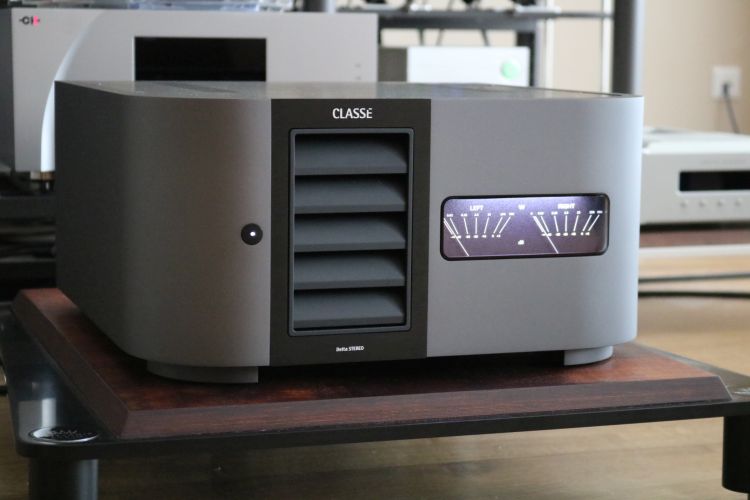
System Context
The instructions for use indicate that the lion’s share of the effects of running in are over after 72 hours of use. Just to be on the safe side, I left the preamplifier switched on and connected to the music server in tandem for more than two weeks (336 hours) before critical listening.
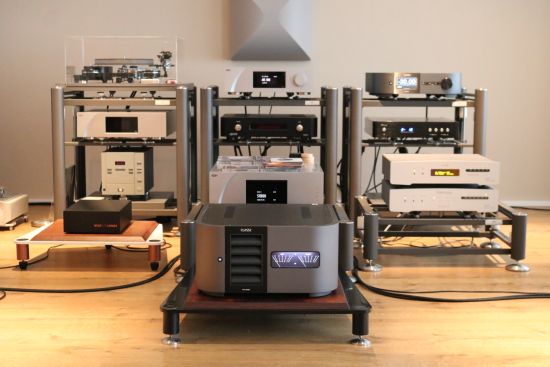
The Delta Pre has been listened to in a system consisting of a CH Precision C1 DAC, CH Precision A1.5 power amp and, of course, the Classé Delta Stereo power amp, the Antipodes K50 music server, Aqua Formula xHD DAC, Aqua LinQ streaming endpoint and, finally, the Audio-GD Master 1 preamplifier. The speakers used are the Magico S1 mk2 and Wolf von Langa SON.
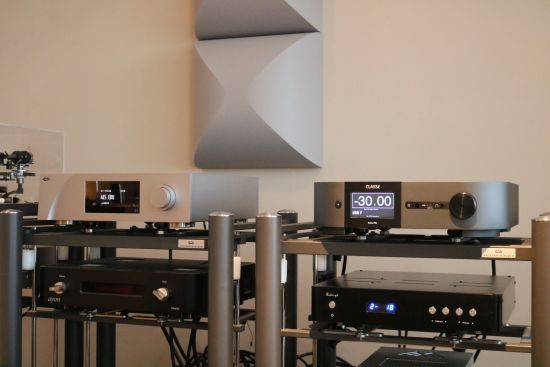
Listening
Whether the Delta Pre is paired with the accompanying Delta Stereo amplifier or with the CH Precision A1.5 amplifier, and whether it is used as a purely analog preamplifier, as a DAC or as a combination, it always sounds consistent and always very well-balanced. The preamp manages to always achieve the same excellent sonic balance between neutrality, openness, warmth and smoothness in every mode.
Like its powerhouse stablemate, the Delta Pre has a touch of warmth and richness that is present from the lowest bass to the highest treble making it appear very neutral and even-handed while always remaining forgiving. As with any revealing preamp of DAC, better source material will lead to better results but its full and smooth character makes that the result will always be on the pleasing side, even when playing less than stellar recordings.
Although the preamp’s subtle warmth is identifiable after a comparison with the C1 DAC and the Delta Pre’s bass is indeed fuller than with the leaner-sounding Aqua Formula DAC, I would not consider the Classé Pre as warm-sounding. Like the poweramp, the preamp injects the music with richness without being sounding noticeably warm. Why not? Well, for a component to sound warm in my book, it needs to have a “tube”-like creamy midrange and/or a fatty or woolly bass. The Classé has neither. Like the power amplifier, it has solid bass with lots of authority and lively, detailed and communicative midrange.
The Classé is arguably most impressive when combining forces as a DAC + preamp. Although it has the same sonic signature when used as a pure analog preamp along with an external DAC, in this case the Aqua Formula xHD, the relatively affordable Audio-GD Master 1 preamp analog is just that little bit more transparent as well as slightly more neutral under the same circumstances. If you’re looking for the least added signature, then the 1400-euro Master 1 is a better option even if it is relatively less sonorous, colorful, and forgiving, as the Classé. Using the almost 14.000-euro Aqua Formula DAC with the Delta Pre offers a change in perspective conform the usual differences that I note when comparing the Formula DAC with other DACs: slightly leaner in the bass and slightly more open/forward in the upper midrange. The Aqua’s main feature, its formidable resolution, is not really evident via the Classé, which seems to indicate that while a change in perspective can be obtained, there is really no point in adding an external DAC.
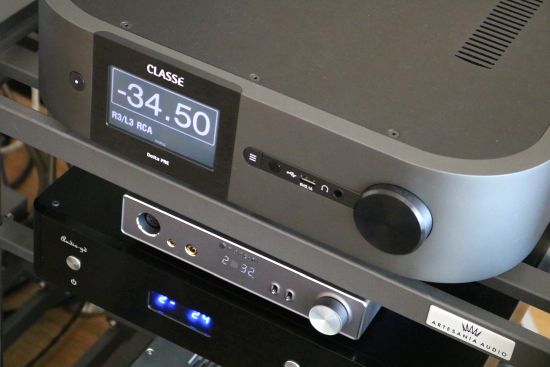
But of course, as interesting as these individual assessments are, one does not get the Delta Pre just for its preamp function nor for its DAC-only performance.
My normal front end is the CH Precision C1 DAC that I use coupled directly to the A1.5 power amp without an analog preamp. When replacing the C1 by the Delta Pre I could not suppress a sigh of disbelief. Given the C1’s hefty 40-K price tag I was expecting a serious drop in the overall quality but that did not happen!
Both components create a solidly grounded and beautifully textured and well filled-out sonic picture with robust bass and a midrange with just the right amount of color and fullness, and they don’t differ much from each other in terms of the size of the soundstage (either left to right or front to back) either. However, I do notice that the C1 makes sounds appear spatially separated from the speakers more easily than the Classé.
The main difference that you pick up on, though, is that the Classé’s treble is a little rounder and a tiny bit less airy than the C1’s. Conversely, one could feel that the C1 is just a little dry. I would argue that the C1 is more extended and precise but indeed also a little less forgiving. In terms of tonal fullness and overall balance, however, they really are remarkably close.
Where the Swiss reference mainly distinguishes itself is in the greater resolving power, mainly in terms of micro resolution, the separation of harmonic overtones and subtle expression. Also, the C1 has a small edge in separating the instruments out in their individual layers of depth. In comparison, while the Delta Pre would image just as solidly and deeply, the differentiation between an instrument that plays up front and one that plays all the way in the back is a little reduced.
Because it is just that little bit more revealing and slightly more exciting, the C1 remains my personal reference and at 4x the Classé’s price, that’s not unexpected. But even with revealing loudspeakers such as the Magicos or the SONs, really, the difference sure is not as large as one might expect.
In addition, at 4 times less than the C1, the Classé Delta Pre not only fulfills the function of a DAC and analog preamplifier but also offers extensive network streaming functionality.
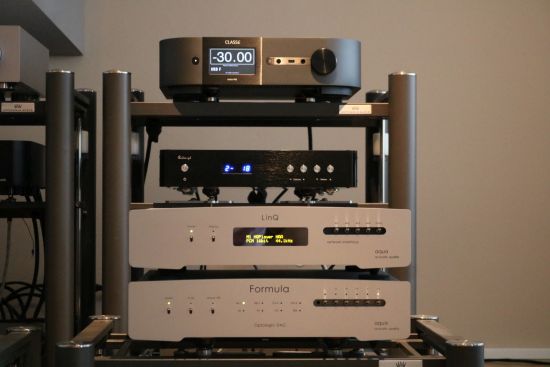
Streaming
When streaming, the Delta Pre again performs at a very high level and always with the same even-handed balance as with traditional digital sources. However, I did encounter some software instabilities.
Whilst playing from Roon via Airplay you can simply start a stream from jRiver via UPnP and this will stop playback in Roon, switch the input on the Delta Pre and the music will play. So far so good.
Starting playback in Roon with the Delta Pre as Renderer whilst playing from jRiver via UPnP also switches the input on the Classé to the new input and the music plays as it should but this also kills the jRiver app every time.
Switching between AES/EBU and one of the Network inputs (either Roon or jRiver) works as it should, pausing the stream when switching away but not killing the app.
Switching between any input and starting playback in Roon via the USB connection also switches the Delta pre to the right input and plays the music. There’s no instability here and you can free switch between the inputs with no issues whatsoever.
These streaming operational peculiarities aside, the sound quality on each of the Delta’s inputs is consistently high.
Digital Inputs Compared
Between UPnP and Roon via HQ Player on the LinQ and the Classé’s AES/EBU input, the differences are in line with earlier experiences across a wide range of devices. UPnP has a slight advantage over Roon+HQ Player in terms of articulation and overall crispness and USB sounds slightly more stilted than the other digital inputs. Of all digital inputs, I would rank UPnP the highest, then Roon+HQP via de Aqua LinQ and AES/EBU, then USB and Airplay last. But I should emphasize that the differences are not at all huge and unless you are in a very attentive mood and compare them directly, any of them will work just fine.
What’s great is that you can also control the Delta Pre’s volume via the Roon interface when the unit is used via USB, as long as this has been enabled in the renderer’s software and Roon’s zone.
Airplay
Worth mentioning is the Airplay functionality. Although the absolute sound quality with this protocol (using a WAV source, converted to ALAC) is inherently always somewhat lower (more diffuse and less robust) than with UPnP, the quality of Airplay via the Delta Pre was surprisingly powerful, dynamic and expressive. In comparison with UPnP, however, it can be heard that Airplay is a little rough in the treble and overall not quite as delicate as via AES/EBU.
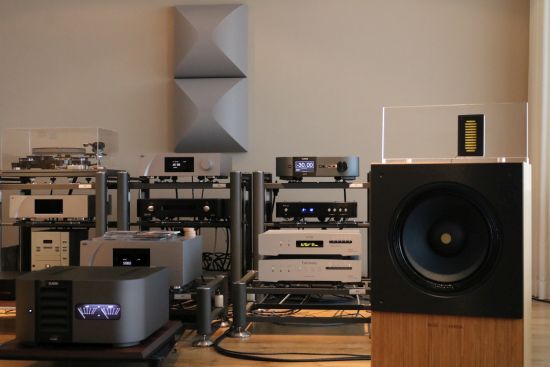
Conclusion
Of all the power amplifiers that I have reviewed after the CH A1.5, the Delta Stereo power amplifier has honestly impressed me most. Possessing of a solid and full but natural and even-handed sound with a hint of smoothness, the amp is never cool or sterile. Its articulate directness and positively huge dynamic impact make that is always engaging and lively. In certain areas, such as bass solidity and slam, it outperforms even my Swiss reference! I much enjoyed my time with it and the match with the Magico S1 mk2’s was absolutely perfect. The Classé clearly has a very well-thought-out design and it is one of the best transistor amplifiers that I have heard.
As the power amplifier, the Delta Pre is a particularly well-balanced device that always performs well under all circumstances. No matter how it is used, as a preamp, DAC, streaming endpoint, or a combination, it always possesses the same sonic virtues. Tonally full and robust yet open and communicative with a hint of smoothness, the Delta Pre offers precisely the right balance between “revealing” and “relaxing”.
Judging from these two components, it seems that Classé is going for a uniform sound and the same strengths for all Delta components. Together they perform in an enormously powerful and compelling expressive, beautifully sonorous but also open and honest yet never aggressive manner.
Power amp fan noise aside I cannot recommend these components more highly!

Try out Roon for yourself
External Links
Manufacturer’s website: Classé Audio
Distributor for the Benelux: D+M Europe B.V. (A division of Sound United)

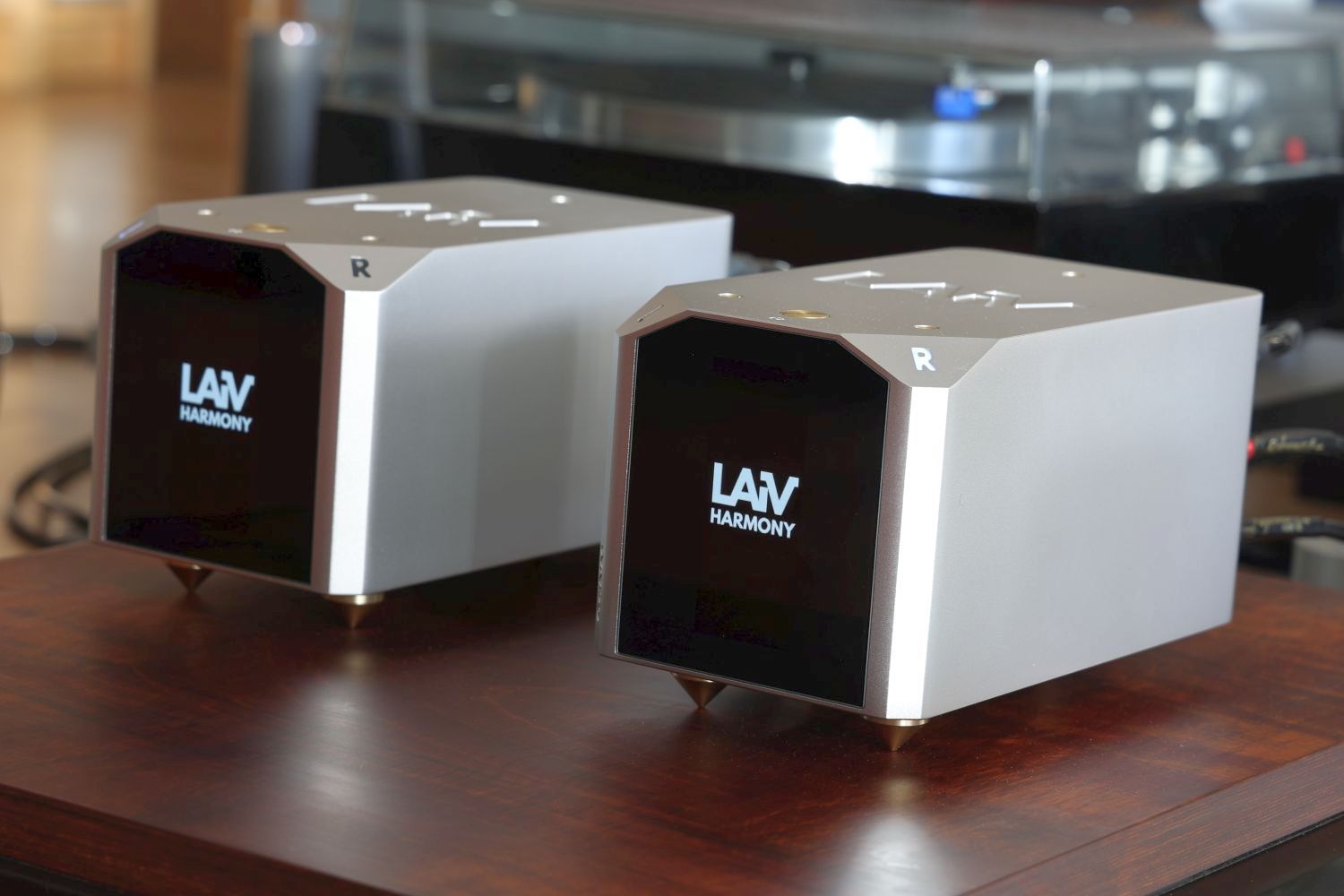
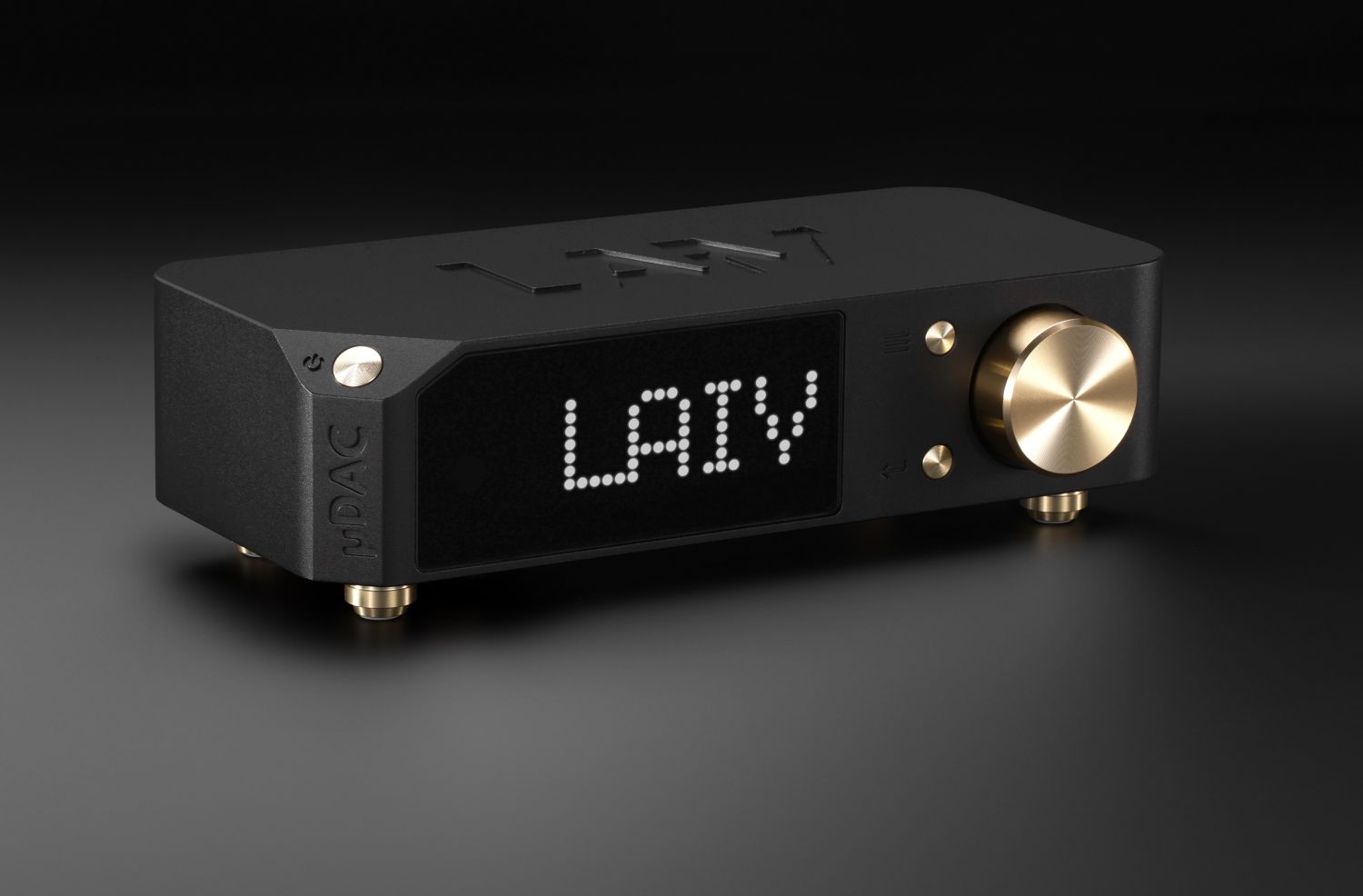
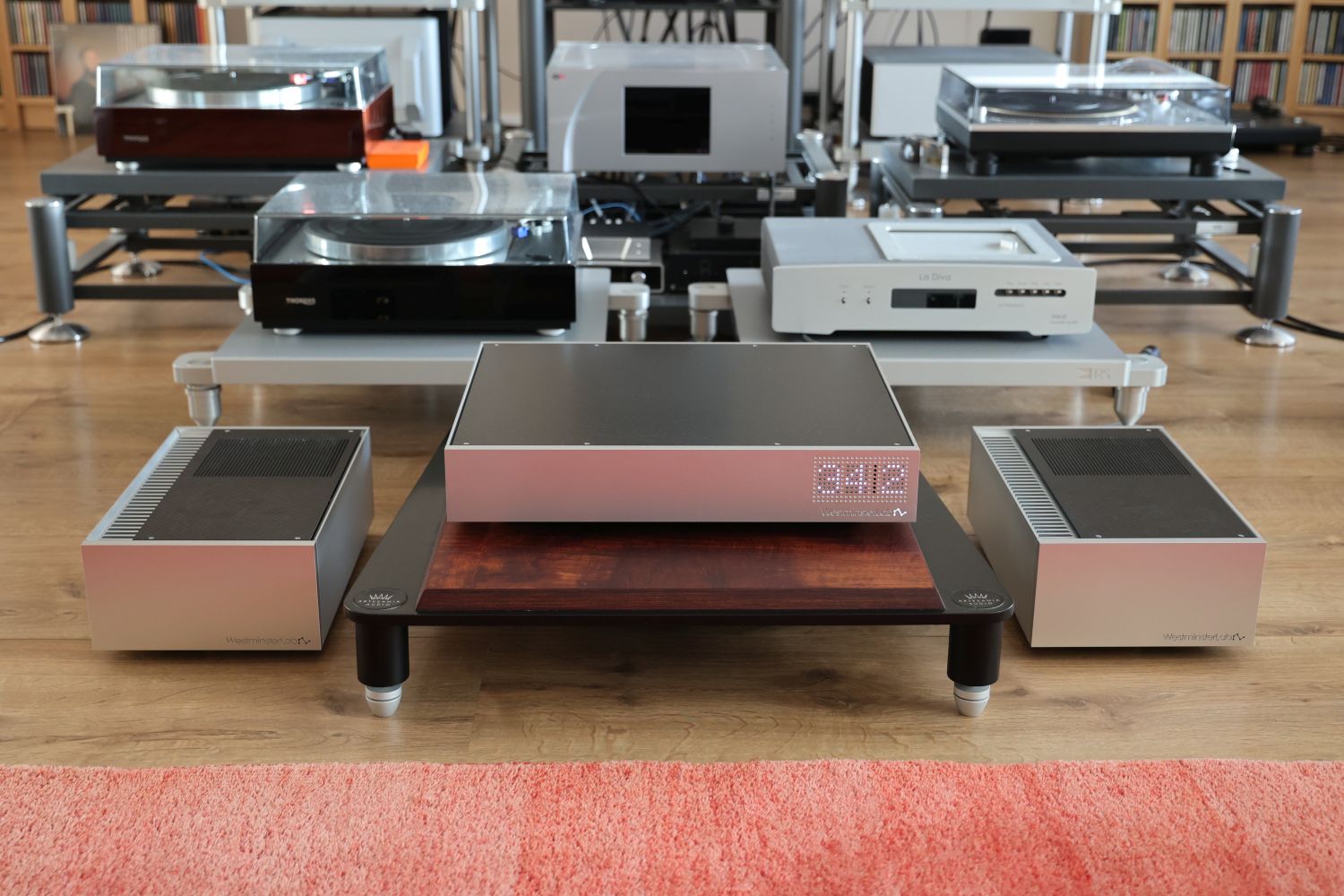
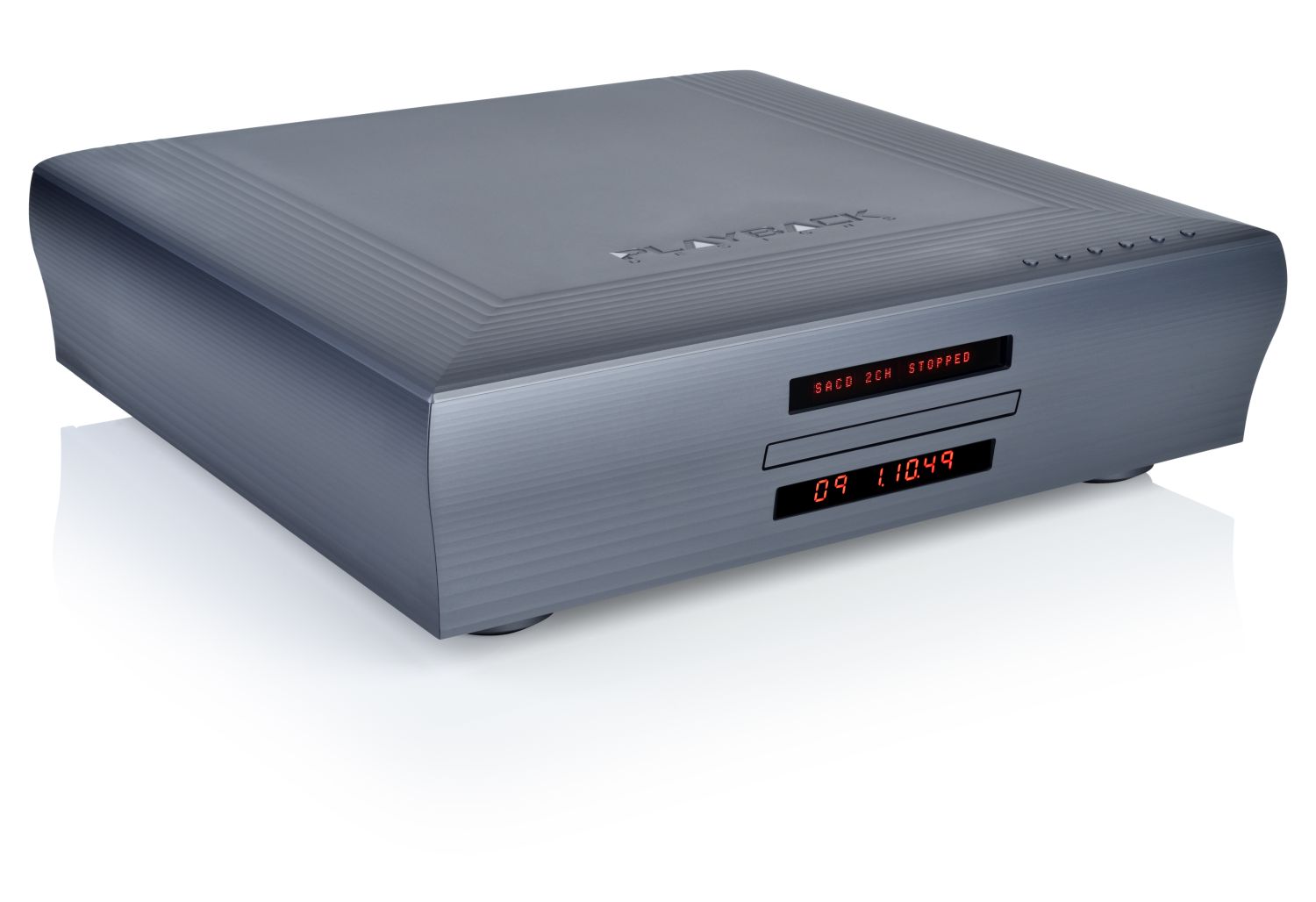

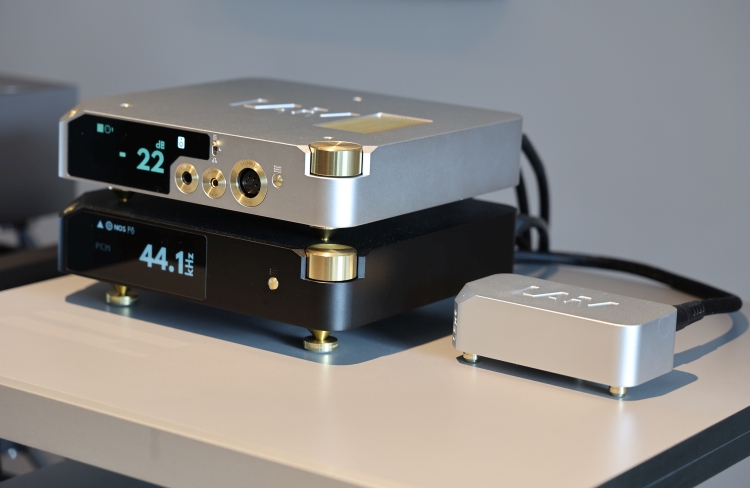

Christian,
Another super thorough well written review thank you. On your description of the Delta pre and it’s Dac I am sure I’m misreading but it sounds like you’re saying the Delta isn’t resolute enough to differentiate between Dacs. Given how much you liked the preamp I’m sure that’s not the case and I’m misconstruing what you wrote.
Thanks,
Jon
Hi Jon, although you can find a preamp that is more transparent and it does add a little bit of its own character, the Delta Pre actually has very good resolution. It’s more that the built-in DAC just works so well that there is little to gain by using an external DAC. What happens is that you only move sideways. I’ve encountered this before with preamps and amplifiers with built in DACs, where it seems there is often (indeed not always) a special synergy or advantage to using the built-in DAC.
Christiaan,
I did have a chance to test the Classé Delta Pre + Classé Delta Stereo Power Amp at home for a week, so I was extra curious to find out if we had similar findings. The fan noise was too loud for me. No need to look for dark background in other components if you have a fan noise killing all of it.
I personally don’t think fans belong in high end audio components for home use.
I found it to be rather even in the frequency delivery but I lacked some speed in the transients. High quality design and material but I think the price was too high compared to the performance. Bass delivery wasn’t to my liking at lower volume levels. Belting out music at loud volumes without any strain my be favorite working day for the Classé.
Also very narrow angle of response for the remote. For this amount of money there are other more tempting options, in my book.
I also missed texture in the midrange that is one of the Analog Domain M75D highlights.
Christiaan I realize that it has been three years since you reviewed the AD and that you have maybe shifted your preference to even more neutrality. From sonic memory and your old notes would you today consider that AD midrange texture as colored or neutral?
Do you have any suggestions for audition if I like a similar midrange texture and richness as the Analog Domain M75D but a little bit more open and airy in the top? And maybe a tad less dry bass, if I can wish three things 🙂
Will you have a Vinnie Rossi review coming up? Seen it sitting in your room for a while now.
Stay safe.
Hi Per, a friend has Analog Domain, and so, the delivery remains vivid in my mind. It’s not colored in any way. CH is not really more neutral either, mostly just more refined and more highly resolving. I feel that Analog Domain is very neutral and, while controlled, also natural, with a pure and open, communicative midrange. I find it to be very realistic, not enriched or smoothed or warmed up in any way, nor hardened or edgy. Yes, the bass is a little dry, certainly compared to the Classe’s, and I also agree on the treble being dark. As for alternatives that retain the AD strengths while not having the deficiencies, the next step up for me was the CH, I’m afraid. Vinnie Rossie will issue an updated model that I will review.
Thank you for your comments Christiaan.
I forgot to mention that I also find the AD to be a little too polite. I miss some of the transient attack.
The best I have heard the AD is in a system that has a DCS DAC stack feeding it and driving a pair of Marten Coltrain. The room was a dedicated listening room but fairly small 20-25 m2. The owner also likes to play very loud. 90-95% of max. volume on the AD M75D. The sound was fabulous and non fatiguing to listen to even at very high volume levels. I think it was partly due to the dryer bass in the AD the Coltrains didn’t overpower the small room with too much bass. And the “gentle” treble of the AD never felt piercing even though it was VERY loud.
But in my home with my TAD CE-1 speakers I was missing a little immediacy/attack at my much lower listening levels (living in an apartment). Is CH or Audio GD more snappy than AD? I’m also curious to what Soulution 330 could bring to the table. I know you have many times referred to the Soulution 711 power amp. Have you heard the 330? With your long term exposure to both CH and Soulution what would you say differ them sonically? Do both have a midrange that is on the same organic, timbre and textured level as AD?
I have tested so many amplifiers, some rather expensive with separate pre and mono blocks, but have so far always been missing the natural qualities of the AD midrange. The reason I asked you if you considered the AD midrange to be “neutral” or colored is that so many other amplifiers sound rather unnatural and lifeless in comparison. It has almost become a brain ghost for me. There is of course no perfect amplifier out there but I’m still hoping to find one that ticks my boxes and have the compromises that I can accept.
Keep up the great work with your reviews and I will keep a special eye out for that Vinnie Rossie one.
Hi Per, as this thread developed, we moved a little bit too much beyond the topic of this comment section. It’s ok for now but for follow-up questions (if not related to Classe), it will be better to discuss them under more related articles.
CH is not snappier or more immediate than AD. The Classe is, and so is AGD. For a comparison between the 711 and the A1.5, please see this mini-review. I haven’t heard the 330 but the 711 is not snappier than Classe or AGD. Amps that are, usually deviate from neutrality. I’m not sure if I had already mentioned the Anthem STR? That’s the snappiest amp I have heard. It’s got tight bass and a similarly neutral midrange but it is drier and edgier than all the aforementioned amps. See the review for the specifics. Oh, the Vinnie is also quite snappy but I’ll have to wait for the updated version to reach a conslusion. In conclusion, may I ask if you found the Classe to be snappy/lively enough? If not, then I fear that the amplifier may not be the culptit in your system.
Hi Christiaan,
As you wrote ”- While on this subject I also noted that the amp sounds best when playing a little louder. At lower volume, it loses some of its finesse and becomes a little less exciting.” I also found the Classé to be lively enough on moderate to louder volume levels but losing its excitement and pros on lower volumes – to a higher degree than some other amps.
I should also factor in that with lower volume levels the disturbing fan noise made me loose excitement over the Classé and I would possibly judge the sound different if it had been quiet.
I will return with further comments under more related articles, as per your suggestion.
Thanks.
Hi Per, the Classe is not hyper-detailed nor very finely resolving which adds to it sounding better when playing a little louder. This also makes the fan less noticeable. When playing a little louder, I really like its propulsive sound and it sure LOVES to play at even louder levels. Nevertheless, I agree that the fan remains an important factor to consider.
Hello , i use Classe CP-800 with CA-2300 (previous series ), i can tell you how i resolve fan noise , when i listen misic , i put one pillow in front and another in back of amplifiers , without stop air flow . BR
Yup, that will surely reduce the noise but I don’t think it is good for the amp’s health. Capacitors age faster when hot.
Hi Christiaan,
as always very good review that does not fall short when pointing on things not so great. A rare and difficult to do thing as reviewers depend on review samples.
But you still gave the Classe a fair review which even Classe should find positive.
I am seriously intreagued by the new Classe Delta and i have one question.
I was thinking the great sound of the Classe is due to the fact that it runs in class A almost all the time. You said they sound better when played louder.
Did you ever notice a difference in sound when the amp goes into class a/b ?
I wonder if i would be better up buying the Mono amps instead because with 35W class A they should never need to switch to a/b (unless you rock loud).
What do you think ? Mono or Stereo ?
Thanks.
Markus
Hi Markus, Alas, there is no way to tell when the amp goes from Class-A to Class-AB. That said, I don’t think this is the main reason why the amp sounds the way it does. By that, I mean that I think its character is inherent to its overall design and more likely the result of decisions made in the power supply and driver stages than on the Class-A concept. Of course, Class-A does propvide theoretical benefits in that there is no crossover distortion which can be audible as a lack of hardness/edge. While I have not compared the Classe Delta stereo to the monos, usually, when increasing the number of output devices results in a higher power rating along with other obvious benefits. But unless the monos are simply the contents of the stereo amp divided over 2 chassis, depending on the exact changes, this can also influence the character or nature of the amp. It is possible that the monos sound tighter or leaner, or alternatively perhaps slightly more diffuse, or less refined. Or they could be better overall. I just don’t know. The only way for you to know is to try both options. If you do happen to make this comparison, do let me know what you think!
tx for your response. even though you left the question partially unanswered (how could you when you could not make the direct comparison) i appreciate it.
It helped in the way that you pointed out that you guess they will more likely sound the same than different (because of design choices) and that class a/b or not might not be a concern. I want to buy used so i might not be able to make that comparison that is why i was curious 🙂
If i am able to i will report.
Tx again.
Markus
I also experienced something that was never true years ago …
that the stereo amp can sound even better than the mono versions in ones system.
Hi Markus, Having double power supplies is almost always a very good idea, especially with power-hungry speakers. But depending on the internal changes, a stereo amp can indeed sound subjectively better than the mono version. It depends on which aspects of the performance are found to be most important to the listener. Please note that there is a difference between technical or audiophile aspects, and the overall character. I would assume the stereo and mono Classe amps have the same basic character but there will surely be differences in some fields. Just which differences I cannot say without having compared this myself. Happy hunting!
One last question about the Delta Pre. I saw it was also a recommended product in the DAC list. I assume it means that the Delta Pre has a very good DAC, too.
I use a Audiovalve Solaris as Pre and it has a super DAC i think. I also have the latest Macintosh CD Player with their latest DAC, too. The Solaris beats it easily that is how good it sounds.
Do you think one can happyly live with the Delta DAC or will it feel like the bottle neck (compared to the rest of a high price and quality system) ?
I think the Delta pre has a great DAC on board, certainly at the price. There are better DACs but they will cost as much as the Delta pre itself or more.
Hi Christiaan,
I love the reviews on this site and I found, as an owner of the Delta PRE, that your description matches my experience almost exactly!
I’m looking at upgrading to another DAC and I was looking for something with similar character as the Delta PRE, which I find to have a great bottom end (warm?) and extremely non-fatiguing to listen to.
I’ve tried a host of other DACs including the Tambaqui and dCS Rossini APEX and found them fatiguing despite improvements in detail and soundstage.
Any recommendations up to ~$20k for a DAC that would improve detail and soundstage but retain the non-fatiguing listening experience I love?
Thanks!
Nice feedback, thanks. Accuphase DC-37 is very smooth and rich, and relaxed, but well detailed. APL could be an option, and if tubes are on the table then you could consider the Aries Cerat Helene.
Thanks Christiaan. One more – how about the Aqua DACs? Especially La Scala with the tubes? Thanks again
The Aqua La Scala is precise, lively, and expressive, not really lush, smooth, or warm, which I think is the “non-fatiguing” sound you are after. That said, for me it is one of the best DACs in its price range.
Great Review Christiaan, I own a pair of Classe Delta Mono’s that drive my new Wilson Audio Alexx V’s. I have a VAC Sig Mk2 SE as a Pre. It sounds wonderful to my ears. However, I can’t help think I’m missing something with these amps. Thinking of moving to CH or something similar but am concerned the delta in SQ would be small compared to the amount I would have to spend. What do you think? Any recommendations would be appreciated. Love your site!
Hi Scott, I would not classify the difference between Classe Delta and CH Precision as small. Yes, you pay considerably more, but you also get more. It is diminishing returns as always, but here, we are talking amplifiers with different skillsets. The CH amp(s) is/are worth aspiring to if you are looking for higher resolution, more air, more refinement, nimbler/more lightfooted/faster bass, and overall more sophistication. I think even a single A1.5 would drive the Alexx very well but CH amplifiers have less “bombastic” slam than the Classe. They can definitely rock but they are not Krells or Brystons in that respect.
I may have missed it, but do you remember which of your power cables was used on the power amp?
I think that must have been a Belden 19364 with Bals Schuko and Oyaide C-004 IEC.
Thanks
I have a Delta hence my curiosity. The front end is likely to change to a Grimm MU2, then I will try out some alternative power cables. Gigawatt will be among them, and probably the Mad Scientist Ultra.
Hi, Christiaan-
Wonderful review. Your reviews assist me more than any other online or magazine based audiophile reviews. I am considering purchasing a Delta Stereo amplifier, but I am curious to how it would compare to a class A or AB Accuphase or Esoteric amplifiers (I am not sure if you have reviewed Esoteric gear)? To me, Accuphase is a very rich sounding amplifier and Esoteric has a strong, almost hard tone sound. I have been told that the Delta Stereo is somewhat in between or has the best qualities of both the Accuphase and Esoteric… with none of the deficits… kind of a happy medium. Any additional insights that you could provide would be greatly appreciated. Thank you.
Thanks for the nice feedback! 🙂 I’ve not heard Esoteric amplification in a controlled environment but I think what you’ve been told makes sense. Most Accuphase amps are indeed quite smooth, some too much so for my taste. The Classe Delta is both: smooth yet robust, solid, and expressive, not hard but also not too laidback.